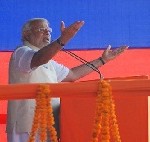Today, Narendra Modi of the Bharatiya Janata Party has been elected as the new Prime Minister of India. Over 800 million voters – 150 million of whom are young, first-time voters – gave Modi a sweeping mandate to put the old dynastic and inefficient India behind, and look ahead to development and economic prosperity.
This cohort wants India to take its rightful place in the world. They are connected, tech-savvy and uninhibited by old divisions of caste or the rural-urban divide. So there will surely be pressure to perform in this transformed socio-political landscape. Like most emerging markets, India is urbanising rapidly. The large-scale internal migration, and a desperate desire for education that can lead to employment and dignity, are forcing politicians to adapt fast or fail.
The internal challenges ahead are many – corruption, crony capitalism, dynastic politics, weak intra-party democracy, a collapsed investment climate, an overwhelmed judiciary and law-order machinery.
Externally, the world has long been looking to India to play a positive role, in the neighbourhood and beyond. So far, we have not contributed significantly.
This then, is the time to assume that responsibility.
Prime Minister Modi, with his energy and determination, is expected to put India to work. The bureaucracy, the institutions, the businesses, the people will all have to step up to the task. And the world will surely take notice.
Gateway House’s experts give their views on the foreign policy priorities of the Modi government:
*Economic diplomacy
*Strategic diplomacy
*Foreign investment
*Energy
*Sustainable growth
*Security
*Urbanisation
*Bilateral engagements
*Latin America
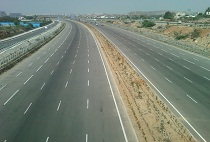
Economic Diplomacy
– Akshay Mathur
Building strategic physical links with neighbouring countries in Asia must be a key priority of the new government. This can be done by focusing on four policy catalysts:
Policy catalyst #1 – Make infrastructure integral to foreign policy formulation.
-To our east, complete the Asian Trilateral Highway connecting India with Myanmar and Thailand, and the Kaladan multi-modal project. These are long overdue, and once finished, will provide people and business access to our neighbours.
-To our west, initiate the development of the Chahbahar port in Iran, and speed up the slow progress of the gas pipeline from Turkmenistan (TAPI) which will provide access to the vast energy markets of Central Asia.
-Within India, prioritise the many industrial corridors such as the Gateway House-proposed Seven Sisters Corridor for development with foreign country partners – these will have the double benefit of supporting India’s foreign policy and domestic economic growth.
Policy catalyst #2 – Support Indian companies on foreign initiatives
– Indian companies have almost 200 engagements in Asia in infrastructure and energy initiatives alone. Public sector companies such as IRCON, RITES, EXIM Bank, and BRO, and private companies like Punj Lloyd and Essar have been instrumental in strengthening our diplomatic outreach. The public sector organisations in particular must be supported with additional professional manpower and deeper budgets. EXIM Bank, for instance, is hugely understaffed – managing a portfolio of over $10 billion with projects in distant developing lands with a staff of only 275 employees. Step up the budget to $30 billion, and hire professionals laterally – this will also embolden the initiatives of the private sector.
Policy catalyst #3 – Create an institutional mechanism for outward investment.
– Include India’s strategic foreign opportunities in the purview of the Cabinet Committee on Investments and the Foreign Investment Promotion Board, both of which currently only focus on expediting inward foreign investment. This will enable organisations such as OVL, GAIL, Petronet, EXIM Bank to jointly engage abroad on costly, labour-intensive, technically-challenging, strategic opportunities. It can also be the inter-ministerial platform for creating a common fund for large projects, similar to a sovereign wealth fund, but one that can finance projects and not just equity investments. The funds can finance private or public-sector driven engagements. This will bring focus, cohesiveness and swiftness to our external engagement.
Policy catalyst #4 – Make economic diplomacy a parallel MEA initiative.
-Appoint commercial counsellors, who are laterally-hired experts from industry, to support the diplomatic initiatives of the Ministry of External Affairs. Their role will be to raise foreign investments for infrastructure in India and support Indian infrastructure projects abroad. Their expertise should include financing, crafting mutually beneficial business contracts, bilateral investment treaties, and skills of negotiating swiftly for India to win competitive international bids.
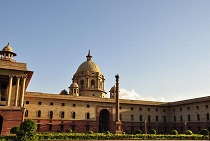
Strategic Diplomacy
– K.N Vaidyanathan
The key priority is to re-orientate India’s approach to external relations through three broad strategies –
-Create a separate branch within the MEA that will focus on enhancing India’s influence in the immediate neighbourhood from a position of strength, not dominance. This would require engagement with different regional political parties within the country.
-A separate branch will focus on trade, commerce and investments – an initiative that can be pursued unfettered by the pulls and pressures of managing neighbouring relations. This will also provide an opportunity to negotiate bilateral agreements to advantage, much like the way China forged its external relations through its boom period in this century. The fulcrum of this initiative would center on India as a compelling place to do business – either in, and or with.
-To enhance the capacity that will lead to more feet on the street, more brains for research and more muscle to negotiate, India needs to invest in human and technological resources to manage external relations.

Foreign Investment
– Rajrishi Singhal
The new government’s imperative is to reinvigorate India’s stagnant investment climate through a liberal foreign direct investment (FDI) regime. This is necessary because:
*A higher investment ratio will get the economy back on a high growth trajectory, and FDI can be the catalyst for this.
*FDI provides stable and long-term foreign capital that will not flee at the first sign of external volatility.
*Fresh investment activity – including FDI – will be essential for absorbing the growing army of unemployed youth.
*India’s savings rate is well below the investment demand – making FDI inevitable. Sectors that desperately need foreign capital are infrastructure, financial services, energy and manufacturing.
While some of the focus will understandably be on reviving stalled projects – spanning industries and infrastructure sectors – the new government must focus on formulating a sensible FDI policy that will remove all ambiguities and reduce approval lead times. The first positive step will be to increase foreign investment in insurance – laying the ground for a long-term asset base for India.
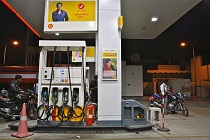
Energy
– Amit Bhandari
As a large energy importer, India’s priority, and therefore that of the new government, will be to improve energy supplies. It is expected to continue on the path of complete de-regulation of diesel, given the stalling of hikes during the election season.
Policy catalyst #1 – Encourage investments in domestic energy sector
-India’s energy markets function under price distortion which keeps investment away from the sector. Subsidy losses on the sale of petroleum fuels such as diesel and petrol is one example, as is the controversy over gas pricing. The new government needs to introduce transparent and market based pricing mechanisms to encourage domestic investment in energy.
– Shale gas is now a major energy source for the U.S. and has the potential to become one in India as well. This will require clear policies on exploration, production and pricing, as well as environmental guidelines.
Policy Catalyst #2: Expedite Indian investments in overseas projects
– The ONGC, OIL and BPCL have stakes in a large gas field in Mozambique and the project has the potential to enhance India’s natural gas supplies. Help in the form of finance and long-term purchase contracts can help speed it up.
– Tata Power, GVK, Adani, JSPL and Lanco own coal mines in Indonesia, Australia and Mozambique. Some of these companies require financial help in the form of debt/equity and project partners/customers. Financially strong public sector companies such as NTPC and Coal India can become equity partners for these projects, ensuring that the coal is delivered to India.
Policy Catalyst #3: Joint action with other energy importing states
– India can work with other energy importing countries such as Japan to expedite energy supply projects globally. This in turn will help improve energy supplies and bring down prices.
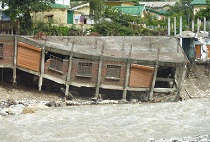
Sustainable growth
– Rajni Bakshi
Balancing rapid economic growth with environmental sustainability will be a key challenge for the new government. It must reject the notion that India can either create millions of new jobs every year or protect the environment. Both goals are essential and non-negotiable.
Policy makers can pursue these twin goals by promoting “green growth” that helps create jobs which is the basis of planning in all sectors.
This can be done at two levels. First, regulations can be crafted to incentivise business models that are designed to maximise natural resources and minimise negative impacts. Second, the rights of local populations, adversely affected by industrial projects, must be protected. Businesses which create win-win deals for the environment and local people will then rise to the top and boost growth that fosters economic democracy or sarvodaya, the well-being of all.
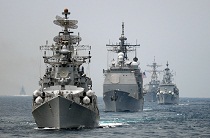
Defence: Maritime and Cyber
– Sameer Patil
India’s biggest security threat is now maritime. It is also expected to be a net security provider, both in the Indian Ocean and the neighbourhood. This will require a prioritised modernisation of the Navy by the new government, including:
* Streamlining the weapons acquisition process and expediting pending proposals for the purchase of warships and maritime aircraft.
*Enabling and accelerating R&D for indigenous defence production and naval modernisation; leverage the local shipbuilding industry which is an asset.
*Accelerating talent recruitment to tackle the shortfall of officers in the forces.
*Creating a National Maritime Authority to coordinate the various security agencies with our many coastal states.
*Convening without delay a summit of the leaders of the Indian Ocean region countries to discuss maritime security challenges.
Equally serious is the cyber security threat which affects both governments and private companies. The new government can immediately:
*Create a regulatory framework to plug gaps in SCADA security systems and identify the most vulnerable critical information infrastructure.
*Expedite the long-pending enactment of a privacy legislation on electronic surveillance and data protection.
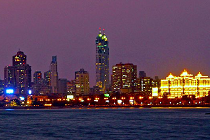
Urbanisation
– Sifra Lentin
Some fundamental changes are in the offing for the financial markets. These include the implementation of two High Powered Committee Reports – The 2007 Percy Mistry Report on making Mumbai an International Financial Center (IFC) and the 2008 Raghuram Rajan Report (2008).
Both reports have been on the back burner, waiting for the right time to make an appearance. Now they may be ready to make their debut; it’s a matter of economic urgency.
Key to this is the revival of Mumbai, the financial capital of India for the last 150 years. It is home to the oldest stock market in Asia (Bombay Stock Exchange), the oldest central bank in Asia (RBI), and to some of the oldest banks in the country which facilitated India’s vast foreign trade. It can do so once again. Key to this goal is building physical and financial infrastructure.
Since 2008, the BSE has developed a range of indices for derivatives, corporate debt, EUREX, and more recently the BRICS Index. The next step is to leap into the international sovereign/corporate bond-equity-currency-derivatives market, with its supporting banking and financial services.
Mumbai’s greatest advantage is its geographical location, strategically placed between Tokyo and London. The city can easily be a financial gateway for Karachi, Dhaka, Male and Colombo, as also for East and South Africa where the strong, commercially oriented Indian diaspora is an opportunity waiting to be aggressively pursued. The much-touted Cairo to Cape railway line can be funded by sovereign bonds structured and floated in Mumbai and denominated in Indian rupees, once it is in free-float – a key point of both reports.
The DNA of the city is encoded in numbers and finance. What Mumbai needs to regain its international status and financial reach, and to be able to power India’s global engagements, is sound capital markets. As the Percy and Rajan Committee Reports begin to be implemented, the other virtuous elements will come into play, like political transparency, a time-bound judicial system, a rapid physical infrastructure build-out and good municipal governance.
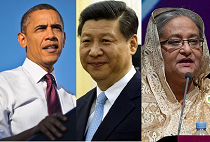
Bilateral engagements
– Neelam Deo
A new BJP-led government, unlike the charge against its predecessor, will not put all its eggs in the U.S. basket, but will eventually craft a more western-oriented foreign policy. Once a way is found around the ‘denial of visa to Narendra Modi’ issue, the natural affinity between India and the U.S. will again come to the fore, especially in the areas of high-technology, energy policy and cooperation in defence production. These will be reinforced by the strong people-to-people contacts and the interests of the corporate sectors in both countries for expanding exchanges. In addition, Modi’s perceived affinity with countries like Israel, Japan and Singapore – all close American allies – will reinforce the links between India and the West.
A Modi-led government is likely to continue with the policy of hope that trade and economic exchanges with China will keep the border quiet. It is with neighbours that a BJP-led government could go either way – more overtures as under Atal Behari Vajpayee or a harsher policy of denial and disconnect with Pakistan. On Bangladesh, the dismissive attitude towards illegal immigrants could lose India its solitary friend in the fight against Islamist terrorism. All of the above will come gradually, because there is continuity in India’s foreign policy constraints that cannot be overturned overnight.
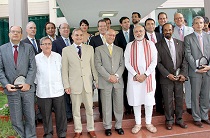
Latin America
– R. Viswanathan
The Latin American foreign ministries welcome Modi’s victory since they expect India under his leadership to raise its global profile with a robust and independent foreign policy. They perceived PM Manmohan Singh as unwilling to take a stand critical of the U.S. on global issues because of his obsession with the nuclear deal. The Latin Americans have come out of being the “backyard of the U.S.” in the last two decades and have started to pursue an autonomous and assertive foreign policy and seek a multipolar world. They fear that unilateralist approaches by western powers have destabilised countries such as Afghanistan, Iraq, Libya, Syria and now Ukraine – giving rise to the growth of fundamentalism, separatism and terrorism. They believe that this trend needs to be checked by India and Latin America playing a more assertive role.
The Brazilian diplomats hope that Modi will inspire President Dilma Rousseff to revive the India-Brazil partnership in the pursuit of common global agenda including permanent membership of UNSC. She has lowered Brazil’s global profile with her disinterest in foreign policy.
Modi will also revive IBSA which has remained ineffective in recent years since all the three leaders of the partner countries had failed to move IBSA forward with their passive approach.
This article was exclusively written for Gateway House: Indian Council on Global Relations. You can read more exclusive content here.
For interview requests with the author, or for permission to republish, please contact outreach@gatewayhouse.in.
© Copyright 2014 Gateway House: Indian Council on Global Relations. All rights reserved. Any unauthorized copying or reproduction is strictly prohibited


